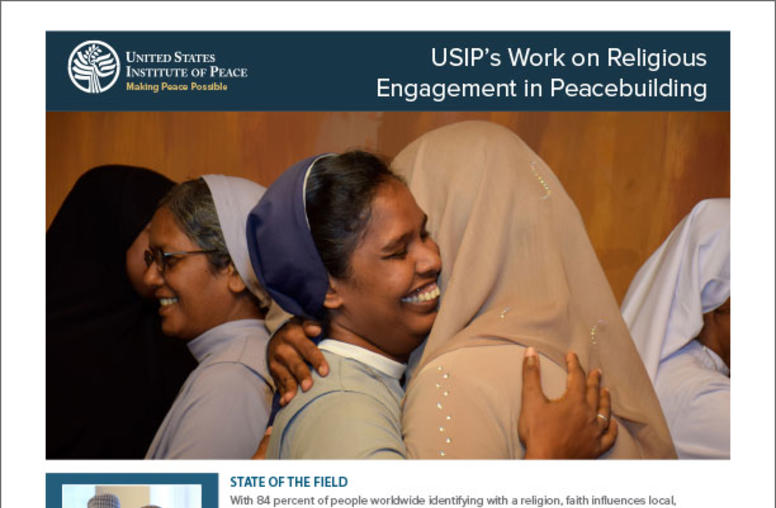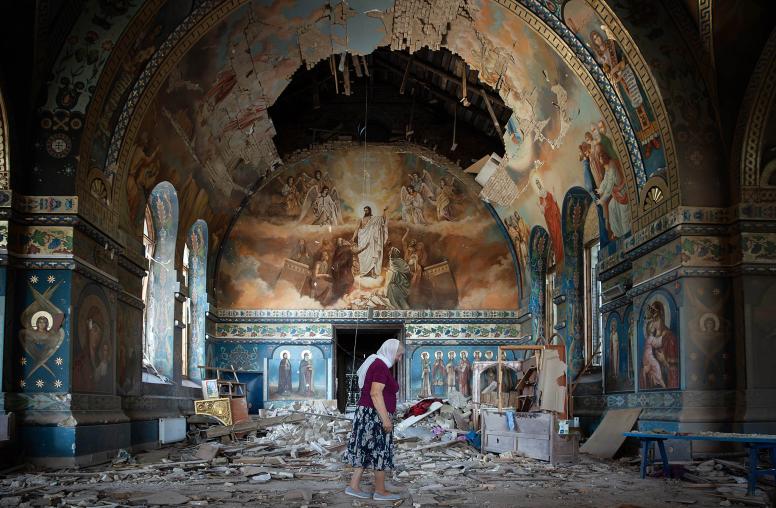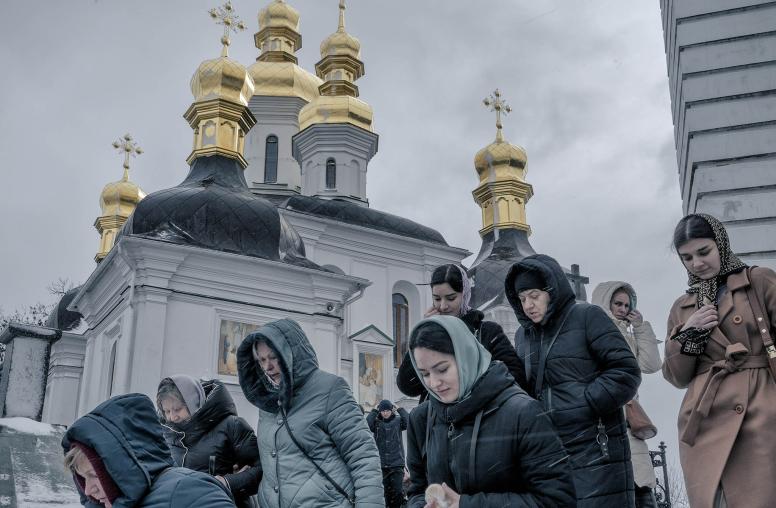Missing Piece of the Puzzle: Preserving Religious Diversity by Protecting the Past
U.N. resolution provides an opportunity to empower religious communities to protect their heritage, heal scars of war.
The United Nations General Assembly in January adopted a noteworthy resolution, “Promoting a Culture of Peace and Tolerance to Safeguard Religious Sites,” highlighting the often-ignored nexus between protection of cultural heritage and preservation of religious pluralism and peaceful coexistence. The resolution’s aims are broad, calling for “strengthened international efforts to foster a global dialogue on the promotion of a culture of tolerance and peace at all levels.” But it also mandates the U.N. secretary-general to convene an international conference focusing on the “United Nations Plan of Action to Safeguard Religious Sites.”

The timing is right for such a gathering. However, for this to have a lasting impact, the U.N. and its member states need to commit resources, empower local actors, and partner with religious communities in conservation efforts.
The Need for a Global Response
Just six years ago, the world witnessed a deliberate campaign of mass atrocities by the Islamic State group (ISIS) that attempted to erase the physical and historic religious landscape in Iraq. ISIS’ depravations against Ezidis (Yazidis) and other minorities grabbed headlines. ISIS also destroyed religious and cultural sites belonging to Christians and other religious minorities and Muslim communities. Despite the group’s defeat, the loss of historic cultural and religious sites remains a challenge to any successful rebuilding effort.
ISIS was not the first to use cultural destruction to terrorize and erase identities. The Taliban in Afghanistan famously destroyed the Bamiyan Buddhas. But governments, too, have razed places of cultural significance to terrorize opponents; the Syrian regime and its Russian allies have repeatedly targeted heritage sites. Destruction also occurs outside of conflict zones. The U.N. resolution’s sponsor, Saudi Arabia, has bulldozed Islamic sites around Mecca at an alarming rate. China, the U.N. Security Council’s permanent member, has demolished Tibetan Buddhist sites and is in the process of erasing Uyghur Muslim cultural and religious sites.
The systematic and deliberate destruction of religiously and culturally significant sites by state and non-state actors is deeply personal, scaring communities and creating long-lasting grievances that will result in ongoing conflict. The loss of these sites has enormous implications for both the targeted communities and the world, removing historically significant places. A global response is needed, which is why a U.N. conference would be timely.
It will take a combination of increased resources to stabilize or restore damaged areas and preserve intangible heritage like songs and oral histories to meet the resolution’s goals. Also, key is pressing governments to protect instead of destroy.
Empowering Religious Communities
But any successful strategy cannot solely be accomplished by outsiders alone. Empowering religious communities to protect their heritage is an underappreciated area of possibility. Most heritage sites are spiritual in nature—it is why people view them as unique and worthy of conservation. Consequently, durable cultural heritage preservation of sacred spaces should involve the local religious community that venerates them. Unlike Palmyra or other dead cities, ancient holy sites are very much alive. Partnering with and equipping local religious communities can secure their future by encouraging a besieged culture, protecting their traditions, and preserving irreplaceable global heritage.
While at the State Department, I started a program to help historical religious communities preserve their sacred sites. Partnering with experts at the Smithsonian Institution, we launched a program in northern Iraq to train impacted religious communities on restoring buildings and protecting movable artifacts. It was a first, bridging the gap between religious actors and heritage professionals. It showed such promise that we convened the training a second time. Under the Smithsonian’s expert guidance, these trainings demonstrated how religious actors could mitigate the impact of terrorism on their cultural sites while helping them determine how best to safeguard.
U.N. institutions are active in preserving the cultural heritage of religious significance and promoting interreligious dialogue. U.N. Alliance of Civilizations High Representative Miguel Ángel Moratinos has done much to elevate the issue of protecting religious sites worldwide.
UNESCO is the traditional player in heritage stabilization efforts, best known for its World Heritage List. A new UNESCO program in Mosul, Iraq’s second-largest city, shows promise. An ancient crossroad, where people from diverse backgrounds, ethnicities and religious beliefs interacted for millennia, Mosul was occupied by ISIS from 2014 to 2017. During that period, Mosul saw its heritage ransacked. To restore several of the city’s most important religious sites, UNESCO launched the “Revive the Spirit of Mosul” program, funded by the United Arab Emirates and other donors. The project’s focus will include the al-Nouri mosque complex and al-Hadba minaret, plus the al-Tahera and al-Saa’a churches. If successful, these rehabilitation efforts will help revive Mosul’s historical diversity, create jobs and provide young people with skills. The program is a model for bringing together international institutions, governments and religious communities to restore heritage sites.
The U.N. conference should prioritize these two examples of connecting conservation efforts with impacted religious groups through training and direct support. If done holistically, these efforts can foster intercommunal peace by bringing communities together across religious lines, both within countries and from the diaspora, such as representatives of Jewish communities with ties to Middle Eastern countries but no longer present there. Efforts to preserve religious heritage sites offer unique opportunities to bring different faith communities together around their shared history.
What better way to defeat ISIS and their mentality of hate than reviving the religious life of groups they tried to exterminate? Restoring sacred heritage sites of minority religious communities can help ensure their future while reminding entire societies how people of different faiths once lived together in peace.
But time is working against us. Hopefully, U.N. member states will carefully consider how to protect cultural heritage sites of a religious nature, as highlighted in the “Resolution on Promoting a Culture of Peace and Tolerance to Safeguard Religious Sites.” The U.N. conference will provide a unique inflection point to drive a concrete agenda on this important issue.



